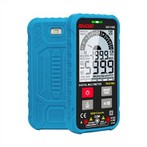Can temperature compensation in a pH meter eliminate all errors caused by temperature?
It must be noted that the temperature compensation set on the pH meter only compensates for the slope term of the electrode (2.303RT/F). The standard potential of glass electrodes and the liquid interface potential are also affected by temperature, and they are not strictly linearly related to temperature. At the same time, the pH electrode also requires a certain amount of time to reach equilibrium at the new temperature. Therefore, both manual and automatic temperature compensation are not very sufficient. According to the operational definition of pH measurement, in order to obtain precise measurement results, the sample solution and standard solution should be measured at the same and constant temperature, which is the principle of isothermal measurement. For pH measurements with general accuracy requirements, temperature compensation can be used when the temperature of the sample solution is different from that of the standard solution.
How to determine if your pH meter is accurate?
Many users have doubts about the accuracy of pH meters when using them? Some people judge based on work experience, some judge based on pH test strips, and some judge based on pH meters used in the past, all of which are unreliable. In fact, the only reliable and simplest method is to use a pH standard buffer solution for calibration. This is the only testing standard. Take three standard buffer solutions: pH 6.86, pH 4.00, and pH 9.18 (preferably freshly prepared and at the same temperature), perform positioning calibration with pH 6.86, slope calibration with pH 4.00, and then test pH 9.18 to see if the pH meter is accurate and qualified.






